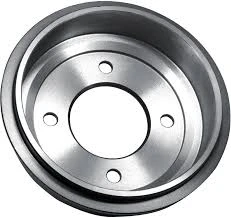
-
 Afrikaans
Afrikaans -
 Albanian
Albanian -
 Amharic
Amharic -
 Arabic
Arabic -
 Armenian
Armenian -
 Azerbaijani
Azerbaijani -
 Basque
Basque -
 Belarusian
Belarusian -
 Bengali
Bengali -
 Bosnian
Bosnian -
 Bulgarian
Bulgarian -
 Catalan
Catalan -
 Cebuano
Cebuano -
 Corsican
Corsican -
 Croatian
Croatian -
 Czech
Czech -
 Danish
Danish -
 Dutch
Dutch -
 ಆಂಗ್ಲ
ಆಂಗ್ಲ -
 Esperanto
Esperanto -
 Estonian
Estonian -
 Finnish
Finnish -
 French
French -
 Frisian
Frisian -
 Galician
Galician -
 Georgian
Georgian -
 German
German -
 Greek
Greek -
 Gujarati
Gujarati -
 Haitian Creole
Haitian Creole -
 hausa
hausa -
 hawaiian
hawaiian -
 Hebrew
Hebrew -
 Hindi
Hindi -
 Miao
Miao -
 Hungarian
Hungarian -
 Icelandic
Icelandic -
 igbo
igbo -
 Indonesian
Indonesian -
 irish
irish -
 Italian
Italian -
 Japanese
Japanese -
 Javanese
Javanese -
 Kannada
Kannada -
 kazakh
kazakh -
 Khmer
Khmer -
 Rwandese
Rwandese -
 Korean
Korean -
 Kurdish
Kurdish -
 Kyrgyz
Kyrgyz -
 Lao
Lao -
 Latin
Latin -
 Latvian
Latvian -
 Lithuanian
Lithuanian -
 Luxembourgish
Luxembourgish -
 Macedonian
Macedonian -
 Malgashi
Malgashi -
 Malay
Malay -
 Malayalam
Malayalam -
 Maltese
Maltese -
 Maori
Maori -
 Marathi
Marathi -
 Mongolian
Mongolian -
 Myanmar
Myanmar -
 Nepali
Nepali -
 Norwegian
Norwegian -
 Norwegian
Norwegian -
 Occitan
Occitan -
 Pashto
Pashto -
 Persian
Persian -
 Polish
Polish -
 Portuguese
Portuguese -
 Punjabi
Punjabi -
 Romanian
Romanian -
 Russian
Russian -
 Samoan
Samoan -
 Scottish Gaelic
Scottish Gaelic -
 Serbian
Serbian -
 Sesotho
Sesotho -
 Shona
Shona -
 Sindhi
Sindhi -
 Sinhala
Sinhala -
 Slovak
Slovak -
 Slovenian
Slovenian -
 Somali
Somali -
 Spanish
Spanish -
 Sundanese
Sundanese -
 Swahili
Swahili -
 Swedish
Swedish -
 Tagalog
Tagalog -
 Tajik
Tajik -
 Tamil
Tamil -
 Tatar
Tatar -
 Telugu
Telugu -
 Thai
Thai -
 Turkish
Turkish -
 Turkmen
Turkmen -
 Ukrainian
Ukrainian -
 Urdu
Urdu -
 Uighur
Uighur -
 Uzbek
Uzbek -
 Vietnamese
Vietnamese -
 Welsh
Welsh -
 Bantu
Bantu -
 Yiddish
Yiddish -
 Yoruba
Yoruba -
 Zulu
Zulu
what are brake drums made of
What Are Brake Drums Made Of?
Brake drums are essential components in the braking systems of many vehicles, particularly older models and certain types of trucks. Understanding what these components are made of is crucial for both vehicle maintenance and performance assessment. Brake drums primarily serve to provide a friction surface for brake shoes, allowing vehicles to halt effectively when needed. This article will explore the materials used in brake drum production, their properties, and their advantages.
The Primary Material Cast Iron
The most commonly used material for manufacturing brake drums is cast iron. Cast iron provides several advantageous properties that make it suitable for this application. First and foremost, it has excellent wear resistance, which is vital because brake drums endure extreme friction and heat when vehicles are in operation. The durability of cast iron ensures that the drums can withstand repeated usage without quickly wearing down.
In addition to wear resistance, cast iron has good thermal conductivity. This property allows it to dissipate heat effectively, which is crucial during prolonged braking scenarios. Excessive heat can lead to brake fade, where the brake components lose effectiveness due to overheating. By using cast iron, manufacturers can produce brake drums that maintain performance even under demanding conditions.
Alternative Materials
While cast iron remains the standard material for brake drums, advances in technology have led to alternative materials being utilized in some applications. For instance, certain high-performance vehicles may utilize aluminum alloys for their brake drums. Aluminum is significantly lighter than cast iron, contributing to reduced overall vehicle weight and improved fuel efficiency.
what are brake drums made of

However, while aluminum alloys offer benefits in terms of weight, they may not inherently possess the same level of thermal stability and wear resistance as cast iron. Therefore, manufacturers must carefully engineer these materials to ensure they can withstand the stresses involved in braking. Furthermore, aluminum can be anodized or treated to enhance its durability, making it a viable option for specific automotive applications.
Composite Materials
Recent developments have also given rise to the use of composite materials in brake drum production. These composites are engineered to combine the benefits of different materials, often incorporating elements like carbon fiber or other polymers. The goal is to create a brake drum that is lightweight yet robust, capable of handling heat and stress similar to traditional materials.
Composites can also allow for greater design flexibility, enabling variations in shape and form that can enhance performance or aesthetics. However, the cost and manufacturing complexity of composite brake drums can be significant, which limits their widespread adoption primarily to high-performance or specialty vehicles.
Conclusion
In summary, brake drums are predominantly made from cast iron due to its excellent wear resistance and thermal management properties. However, advancements in materials technology have introduced alternative options such as aluminum alloys and composite materials, which offer unique benefits in specific contexts. Understanding the materials used in brake drum production is vital for vehicle owners and mechanics alike, as it impacts both performance and maintenance. As technology continues to evolve, the future may see even more diverse materials used in brake drum manufacturing, leading to enhanced vehicle safety and efficiency on the road.
-
Why Choosing the Right Brake Drum Manufacturer Matters for Vehicle Safety and Performanceಸುದ್ದಿJun.05,2025
-
Understanding Heavy Duty Brake Drums: Key to Truck Safety and Performanceಸುದ್ದಿJun.05,2025
-
Reliable Braking Systems: Rear and Trailer Drum Brake Solutions for Heavy-Duty Applicationsಸುದ್ದಿJun.05,2025
-
Power and Precision: Why Brake Drums Still Dominate in Vehicle Safety Systemsಸುದ್ದಿJun.05,2025
-
Brake Drums: Essential Components for Vehicle Safety and Performanceಸುದ್ದಿJun.05,2025
-
Superior Brake Drums & Rotors for Reliable Stopping Powerಸುದ್ದಿJun.03,2025
-
Premium Brake Drums for Maximum Stopping Powerಸುದ್ದಿJun.03,2025
